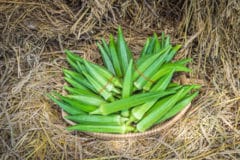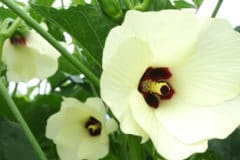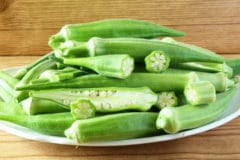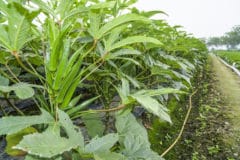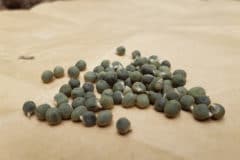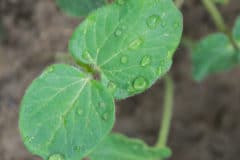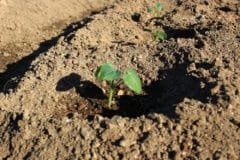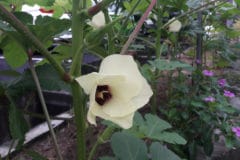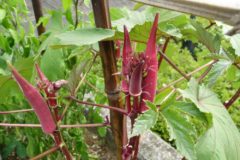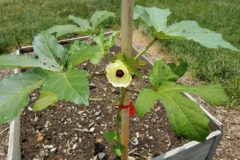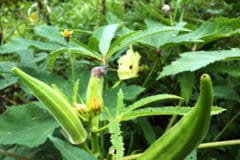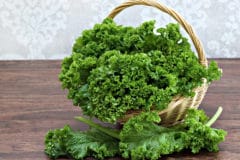When to Go on Pod Alert
Depending on the variety and the growing conditions, okra reaches maturity 50 to 65 days after you plant it. So you can count forward from the date you plant your okra and begin watching for pods about a week before that date and for signs of flowering about two weeks before that date. Pods will begin to appear five to six days after your okra flowers.
Prime Pod Watch Locations
The first flowers and pods will appear under the large leaves at the base of the plant. You will have to gently push these leaves aside when looking for pods. As you move these leaves out of the way, be careful not to knock any flower buds, flowers, or newly forming pods off of your okra plant.
As you harvest these first, low-hanging fruits, the blooms and pods will begin to appear higher on the plant.
Signs That Your Okra Pods Are Ready to Harvest
Okra pods grow quickly, and the warmer the temperatures the faster they grow. Once pods begin to appear, you should check your okra plants daily for pods that are ready for harvesting.
When searching for pods that are ready to harvest, look for:
- Pods that are 2 to 4 inches long, about the length of your finger.
- Pods that are 5 inches long or longer as these are likely to be too tough and woody to eat.
- Pods that are bright green and that feel firm but tender to your touch. Be careful not to bruise the pods when testing them.
- Pods that have turned a dull green as these have become too mature for eating and are beginning to dry and brown to form a protective casing for the seeds they contain.
- Pods that have stems that are difficult to cut when you try to harvest them as these also are likely to be too mature for eating.
If you have longer pods and you are loathe to discard them until you have made absolutely certain that they have become too tough to eat, you have one final test that you can apply. Take the pods into your kitchen and clean them as if you are getting ready to use them. Then, take a sharp knife and try to cut the pods open.
If you can cut them open easily, they are not overly mature, but once you cut them open, you should use them immediately or within a day or two. If the pods are difficult to cut, then they have become too tough, and you should compost them.
Harvesting the Pods
To harvest your okra, simply use a knife or pruning shears to cut the stem about 1/4 inch above the pod.
When you are harvesting the first pods from low on the plant and you have your pruning shears in one hand and the branches you’ve pushed aside in the other hand, it’s okay to let the pods drop the short distance to the ground. When you are picking pods from higher on the plant, however, try to catch them to keep them from being bruised by the fall.
Once no more flowers and pods are appearing around the lower leaves, you can remove those leaves. Removing them will encourage pod production higher on the plant.
Harvesting Pods for Seeds
Toward the end of the growing season, a few weeks before the first frost date in your area, you can begin leaving mature pods on your plants if you want some pods to harvest for seeds. Leaving the pods on a single plant should provide enough seeds for the next growing season, if that’s all you want.
If, however, you are trying to maintain a particular variety, you should save the seeds from five to 10 plants. If you are trying to preserve a rare variety of okra, then you should save the seeds from 10 to 25 plants.
The pods that you save for seeds will be ready for harvesting when they turn brown and dry. Cut them from the plant and then dry them on screens or landscaping fabric until they become brittle.
When the pods have become brittle, cut them open with pruning shears and pour the seeds out, and then remove the chaff by screening and winnowing the seeds. Protect the seeds from pests, and you can store them in a cool, dry, dark space for up to three years.

